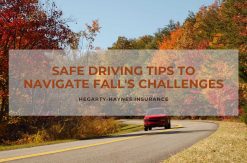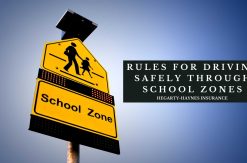
The term ‘distracted driving’ is used to describe any activity that takes the driver’s attention away from the road. Behaviors such as smoking, using electronic devices, eating and drinking, programming navigational systems, and adjusting the audio or climate controls puts your life and the lives of others in danger.
In 2015, distracted driving related crashes caused more than 391,000 injuries, according to the National Highway Traffic Safety Administration (which is where we collected much of the information posted here) and the U.S. Department of Transportation. An additional 3,477 were killed. More statistics can be found here.
The Centers for Disease Control and Prevention (CDC) describe three types of distractions while driving. Visual distractions cause you to take your eyes off the road, manual distractions cause you to take your hands off the wheel, and cognitive distractions cause you to lose your focus.
Distracted Driving Activities
- Texting
- Smoking
- Drowsy Driving
- Eating and drinking
- Talking to passengers
- Programming a navigational system
- Adjusting the audio or climate controls
- Talking on the phone (yes, even if using a hands-free device)
- Grooming (e.g., applying makeup, shaving, tightening your ponytail, etc.)
How You Can Prevent Distracted Driving
#1. Out of Sight, Out of Mind. When you’re driving, set your phone on silent or better yet, power it down. Keep it in your purse, briefcase or backpack to avoid temptation from incoming calls and text messages. Many smartphones now have a driving mode setting that automatically forwards all calls to voicemail and replies to text messages alerting the sender you’re driving and will call back later. If you need to make an urgent call, move your vehicle off the road. Never park on the shoulder or in the breakdown lane for any reason except an emergency.
#2. Get a Good Night’s Sleep. Most people know that getting a good night’s rest is imperative to their health, but too often life’s commands or stimulants, such as coffee and energy drinks get in the way of us getting in the National Sleep Foundation’s recommended 7 to 9 hours (for adults). A recent report released by the AAA Foundation for Traffic Safety reports that drivers who slept less than seven hours, and drivers who have one or more hours less than their usual amount of sleep in a 24-hour period have significantly higher crash rates, than drivers who slept for their body’s normal rest time. If you become sleepy while driving – especially on long road trips – safely pull off the road and take a nap.
#3. Before putting your car in drive, you should:
- Store loose gear
- Secure children and pets
- Program your navigation system
- Adjust seats, mirrors, and audio or climate controls
- Finish personal grooming (i.e., shaving, applying makeup, finishing hair, etc.)
- Worth repeating – put away your electronic devices including your phone
- Give your full attention to the road in front of you; no exceptions
For additional safety tips, we encourage you to read our blog monthly. Click here to receive a free quote on auto, home, renters, and/or business insurance. You can also contact us by calling us at (480) 820-2297.


